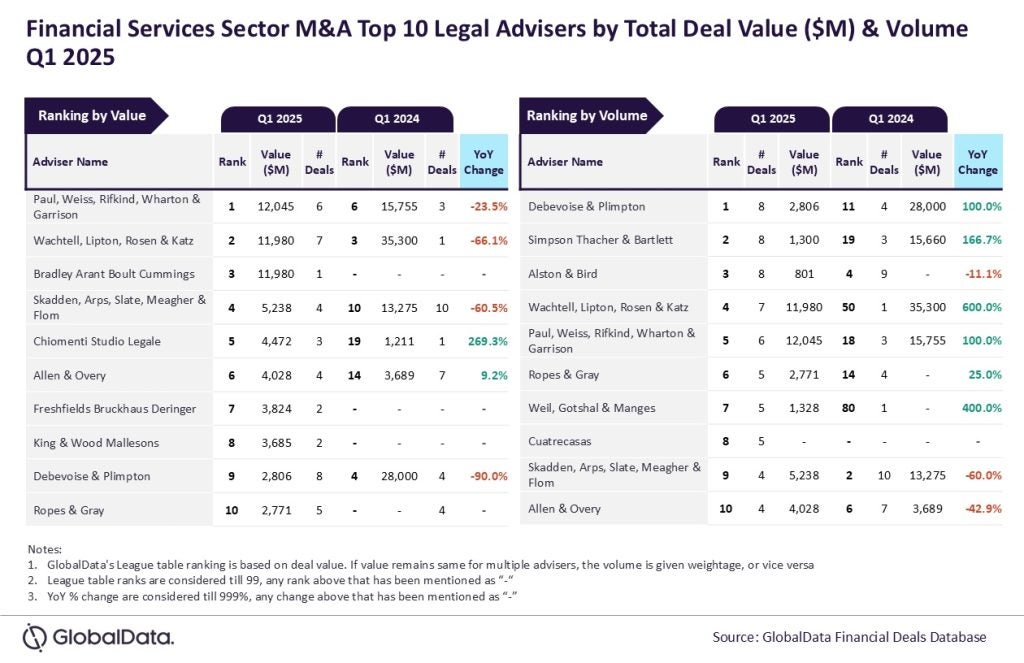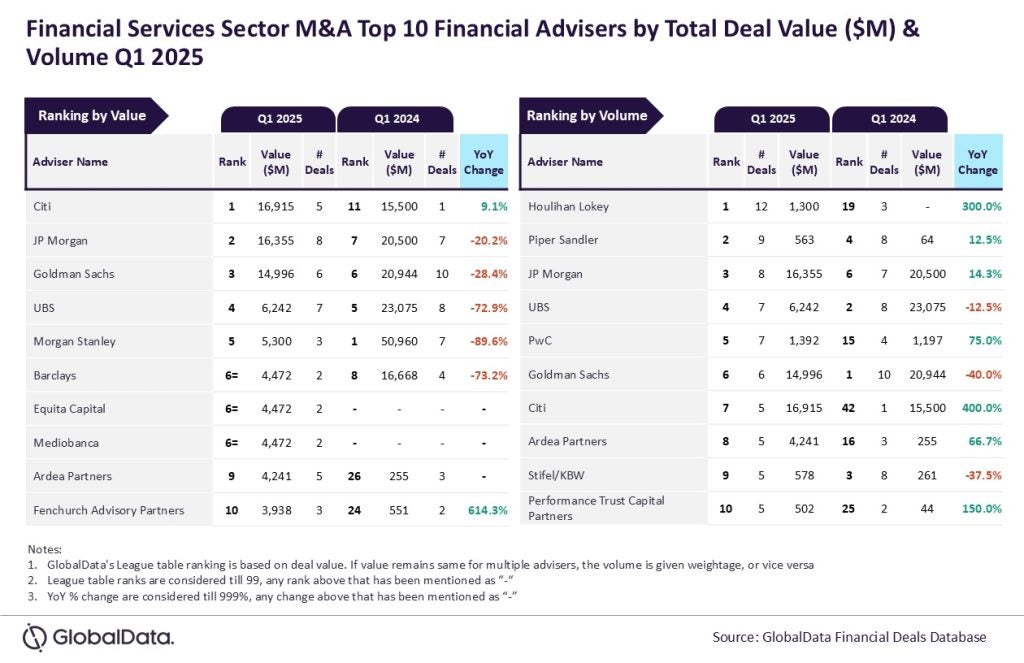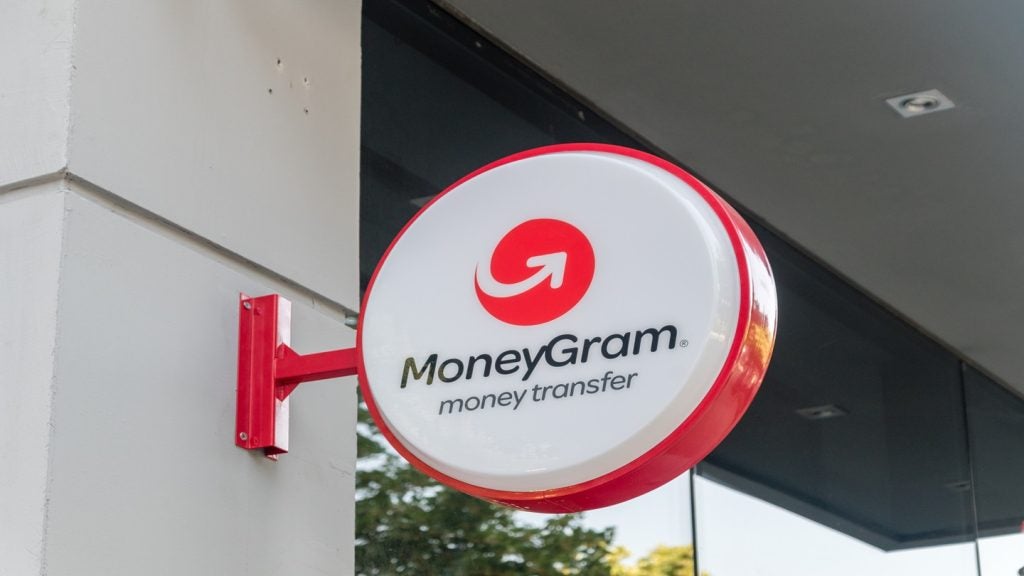The UK’s top retail banks are continuing to cut branch
numbers, according to research carried out by Farah Halime, but it
comes amid further consolidation on the high street following the
economic crisis and a flurry of new entrants wishing to take
advantage of customers’ dissatisfaction with their existing
lender.
Barclays, the UK’s second-largest
lender by assets, has closed the highest number of branches in
nearly a decade – 429 branch closures, or a 20% drop since 2000,
although there have been fewer closures between 2008 and 2009.
The bank was also the worst
performer in the RBI survey of 2007 (see RBI 584), but a spokesperson for
the bank told RBI the spike in closures was down to the
acquisition of the Woolwich in 2007, which subsequently resulted in
a closure of 278 branches.
According to the bank, the closures
that took place after the merger were driven by combining Woolwich
and Barclays branches that were within close proximity of each
other.
But the spokeswoman told
RBI that the bank’s “closure activity over the last four
or five years – outside of the Woolwich branch closures – has been
largely in line with normal activity”.
She added that changing customer
habits meant the bank was matching its branch network to the
customers.
“It’s about making sure that our
branch branches are in the place where customers want to use them.
That sometimes means closing branches, it sometimes means opening
branches,” she said.
She instead focused attention on
the bank’s target for a “complete renovation” of the branch
network, involving a “completely and utterly different” appearance,
new technology and dedicated self service areas. The changes have
affected 450 branches so far.
HSBC, which brands itself as ‘the
world’s local bank’, was the second-worst performer in%age terms,
with 19% fewer branches than in 2000. This represents a closure of
318 branches, nearly half of which have occurred between 2007 and
2009.
But Mark Hemingway, HSBC UK’s head
of media relations said the majority of the branches that closed
were only open for reduced hours and had very low and falling
customer usage.
“Branches are, and will continue to
be, a fundamental part of our distribution network. Branch closures
are never undertaken lightly, but we must continue to ensure that
our network is ‘fit for purpose’ and fully reflects the banking
needs and habits of our customers,” he said.
The bank said that the growth of
internet and telephone banking had also contributed to a spike in
branch closures with around half of all bank customers now
transacting online – something which Hemingway said “inevitably has
an impact on distribution channels”.
“All financial institutions have to
react to this shift in customer behaviour and as such we need to
ensure that our branches are situated in locations where they will
be used,” he said.
He added there was “little doubt”
that customers are changing their banking habits and are using
branches where they work rather than where they live.
Bucking the
trend
At the other end of the scale, the
research showed that The Co-op was one of the only banks in the
survey that had boosted its branch network. It increased its
branches by the most in%age terms, with the opening of 244 more
branches since 2004.
But the figures take into account
the bank’s merger with Britannia Building Society and therefore 245
newly acquired branches. Discounting the additional branches
through the merger, branch numbers for the Co-op would have
remained flat between 2004 and 2009.
The Co-op Bank has been one the
rare winners of the financial crisis with a 38% uptick in the
number of current account switchers from the biggest UK banks. John
Hughes, the bank’s head of retail products told RBI that the bank
had positioned itself well to capitalise on growing dissatisfaction
with private sector lenders.
He also did not rule out further
acquisitional growth and said the bank “can genuinely afford to be
bigger than we are”.
Lloyds Banking Group has the
biggest branch network in the UK with 2,940 branches, following its
takeover of Halifax Bank of Scotland, although the bank declined to
disclose separate numbers for the different brands.
However RBI estimates
suggest that the group, if taking into account the last available
branch numbers for HBOS and Lloyds TSB, has seen around 6% – or 200
– of its outlets close between 2008 and 2009.
A Lloyds spokesperson said branch
numbers have remained “relatively consistent over the years” when
taking into account all of the bank’s brands.
The group last year received
approval from the European Commission for a restructuring plan that
will see it dispose of 600 branches in the next four years.
The bank said the target is to
“divest the business in a way which is best for all stakeholders by
obtaining the best price for the assets”.
Concentrating on
retention
The Lloyds consolidation signals a
wider trend in the UK retail banking market, with big lenders under
pressure to retain customers and a flurry of new entrants aiming to
shake up the sector.
Derek French, director of UK
pressure group Campaign for Community Banking Services, told
RBI: “For the last two or three years [banks] have been
more concerned with their own survival. They were not looking at
getting the public against them even more by closing branches so
that slowdown over the past two years has been quite marked.”
According to the lobby group’s
figures, the high street had seen a definite slowdown in branch
numbers with the overall network shrinking by 19% since 2000.
But French said “traditional banks”
as opposed to building societies and mutuals are still
“over-branched” with an average network of 1,500, whereas a network
of around 800 or 900 would suffice.
French predicts, contrary to
analysts’ forecasts, that Santander will cut its network to around
800 or 900 branches after rationalising the Alliance &
Leicester (A&L) brand with its own. He also said that if
Santander wins the bidding war for the 318 Royal Bank of Scotland
branches on offer, the bank will “cherry-pick” the best and dispose
of the remaining branches.
But Santander’s head of
communications, Anthony Frost, while not commenting on the RBS
sale, told RBI that the bank had no plans to reduce the
number of branches it has after the rebranding of A&L.
The bank, with the combined
networks of Abbey, Bradford & Bingley (B&B) and A&L,
has a 10% share of UK branches with 1,350 outlets.
New entrants have
impact
French added that the number of new
entrants to the retail banking sector would have a mixed
impact.
“Tesco will almost certainly work
with the lower end of the mass market. It’s a very familiar name.
They’re not going to get into anything hugely clever and won’t want
to, but they’ll probably be a first choice for a big section of the
mass market,” he said.
Tesco Bank, which became the sole
owner of Tesco Personal Finance in 2008 as part of its drive to
break into the retail banking market, has already opened six
branches within its stores. Despite the small branch network in
comparison to the larger lenders, a spokesperson told RBI said
there was no timescale for further launches.
“We are asking customers what they
think of [the branches] to enable us to shape our future
proposition,” the spokesperson said.
Tesco Bank’s ambitions are,
however, clear. The bank is looking at taking a 10% share of the
retail market with popularity already on the side of the familiar
brand.
According to a poll conducted in
2009 by polling organisation YouGov, 56% of respondents “definitely
would consider” or are “likely to consider” buying financial
services from Tesco.
Richard Branson’s Virgin Money has
also made in-roads into the retail banking market after the bank’s
recent acquisition of Church House Trust, which provided the
banking license for the bank to develop its retail banking business
in the UK.
US businessman Wilbur Ross also
recently acquired a 21% in the bank for £100m, boosting the bank’s
chances of becoming a full-service retail bank.
Jayne-Anne Gadhia, chief executive
of Virgin Money, said the investment was a “significant
endorsement” of its plans to build an alternative for
consumers.
Metro Bank is another newly-emerged
competitor in the market, headed by American entrepreneur Vernon
Hill.
The bank has recently gained
approval for a banking licence from UK regulator, the Financial
Services Authority and is planning to launch four branches in
London in the next few months.
But French was gloomy about the
bank’s prospects in the UK.
“Metro is a disaster waiting to
happen. I really can’t see any significant difference between what
Metro is offering and what the flagship banks are offering,” he
said.
He played down the bank’s 7-day per
week opening saying that many of the flagship branches of the “Big
Four” lenders were also open at weekends, including Sundays.
French added that the bank did not
have a network which could compete with the likes of Barclays,
Lloyds and HSBC.
But Vernon Hill, in an interview with RBI (see RBI 603), said the bank has
ambitions to grow organically and not seek to merge its way to
prosperity. The bank, which runs with the slogan ‘Love your bank at
last’, plans to open another eight branches in 2011, but has an
ultimate aim for a branch network of around 200 in the next 10
years.
|
DISTRIBUTION
|
|||||||||||||
|
UK – branch numbers, top |
|||||||||||||
|
2000 |
2001 |
2002 |
2003 |
2004 |
2005 |
2006 |
2007 |
2008 |
2009 |
2000-2009 change |
% change |
Future branch plans |
|
|
Abbey National |
755 |
768 |
766 |
753 |
724 |
713 |
n/d |
703 |
710 |
n/d |
-45 |
-6 |
|
|
Alliance & Leicester |
309 |
310 |
310 |
310 |
254 |
254 |
254 |
254 |
254 |
n/d |
-55 |
-18 |
|
|
Bradford & Bingley |
222 |
211 |
211 |
204 |
208 |
206 |
203 |
199 |
197 |
n/d |
-25 |
-11 |
|
|
Santander (1) |
1,161E |
1,325 |
A&L to be integrated and rebranded |
||||||||||
|
Barclays (2) |
2,129 |
2,088 |
2,080 |
2,070 |
2,059 |
2,020 |
2,014 |
1,810 |
1,700 |
1,700 |
-429 |
-20 |
Revamp of network |
|
Britannia Building Society |
288 |
288 |
284 |
284 |
284 |
284 |
253 |
254 |
245 |
n/d |
-43 |
-15 |
|
|
HBOS (4) |
n/d |
1,153 |
1,150 |
1,105 |
1,064 |
1,070 |
1,079 |
1,092 |
n/d |
n/d |
-61 |
-5 |
|
|
HSBC |
1,668 |
1,649 |
1,615 |
1,587 |
1,569 |
1,528 |
1,501 |
1,501 |
1,417 |
1,350 |
-318 |
-19 |
Investing £75m in network |
|
Lloyds Banking Group |
2,223 |
2,147 |
2,078 |
2,052 |
1,996 |
n/d |
n/d |
1,950 |
1,950 |
2940 |
717 |
32 |
Disposal of at least 600 branches |
|
Nationwide Building Society |
824 |
824 |
824 |
824 |
824 |
824 |
824 |
766 |
700 |
700 |
-124 |
-15 |
No current plans to open/close |
|
Royal Bank of Scotland |
2,291 |
2,287 |
2,283 |
2,277 |
2,273 |
2,274 |
2,276 |
2,278 |
2270 |
2,248 |
-43 |
-2 |
Target sale of 318 branches |
|
Co-operative Bank (8) |
n/d |
n/d |
n/d |
n/d |
124 |
126 |
119 |
121 |
128 |
368 |
244 |
196 |
Measured growth as part of continued |
|
Notes: n/d = not disclosed, E = RBI |
|||||||||||||







